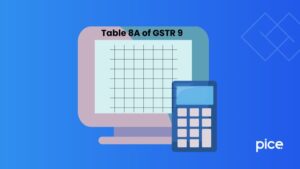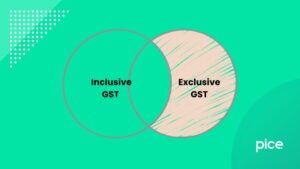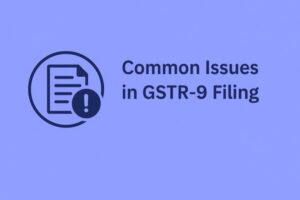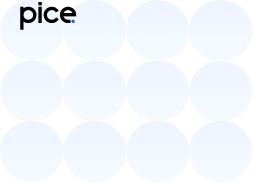What is CVD in GST? Meaning & Process
- 7 Oct 25
- 7 mins
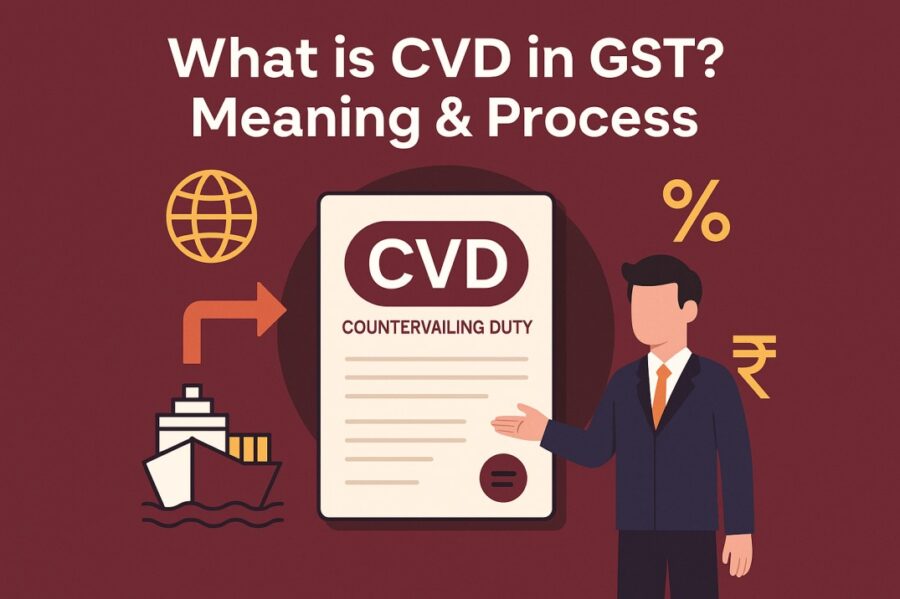
What is CVD in GST? Meaning & Process
Key Takeaways
- Countervailing Duty (CVD) in GST is imposed on imported goods to offset foreign subsidies and protect Indian domestic industries.
- CVD under Section 9 of the Customs Tariff Act ensures fair competition by balancing prices of subsidised imports with local products.
- The CVD investigation process in India is handled by the Directorate General of Trade Remedies (DGTR).
- Provisional CVD can be imposed for up to 6 months to prevent immediate injury to domestic manufacturers.
- Final CVD duties, imposed for 5 years, may be specific or ad valorem, ensuring fair trade and sustainable industrial growth in India.
Indirect tax in India is not only important for domestic businesses but also essential for businesses engaged in international trade. Among various things about international trade, one is imposition of Countervailing Duty (CVD). It ensures that there is a fair playing field for the domestic manufacturers same as the international manufacturers.
To understand what is CVD in GST, it is important to explore how authorities impose it. This article will outline what CVD is and its process of imposition in regard to the regulatory framework in India.
What is CVD in GST?
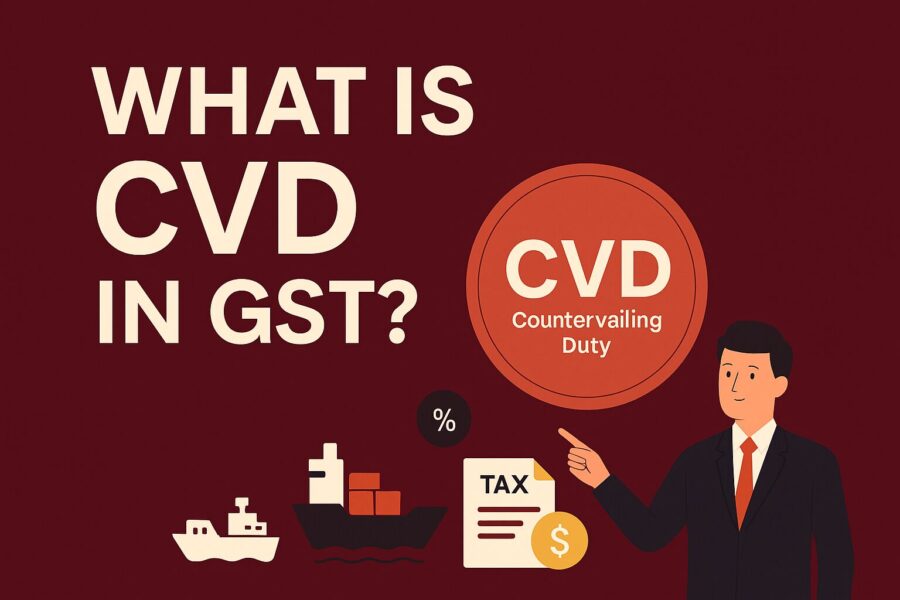
CVD, or Countervailing Duty, is a type of tax that the central government of India imposes on imported goods. The primary purpose of imposing this tax is to protect Indian industry from unfair competition. An unfair advantage can come from the fact that foreign governments give subsidies to their exporters, which makes products cheaper in another country.
Therefore, when these subsidised goods enter India (another country), they can hurt Indian businesses because local products might be more expensive as compared to their foreign counterparts. Thus, to create a balance and fairer/ competitive prices in the Indian industry, the country charges CVD on such imports.
The central government of India imposes this duty under Section 9 of the Customs Tariff Act. The amount of tax imposed on subsidised goods is equivalent to the subsidy which is paid for their export.
Example for CVD
Suppose there is a ‘Company X’ that has made a product in their country and wants to sell it in “another country”. In this case, its country provides it with export subsidies, which results in a reduction in prices, naturally to boost international trade. So, if that product originally cost INR 1000 in that country itself, it now costs INR 800 in “another country”.
Now, this “another country” also has a manufacturer, ‘Company Y’, that makes the same product, and its cost is also INR 1000. Here, if ‘Company X’ sells those same subsidised products for INR 800, it will cause the domestic producers to lose customers. Thus, to create balance in the market again, this “another country” puts CVD on those products of ‘Company X’ and raises its market price.
What Triggers Imposition of Countervailing Duty?
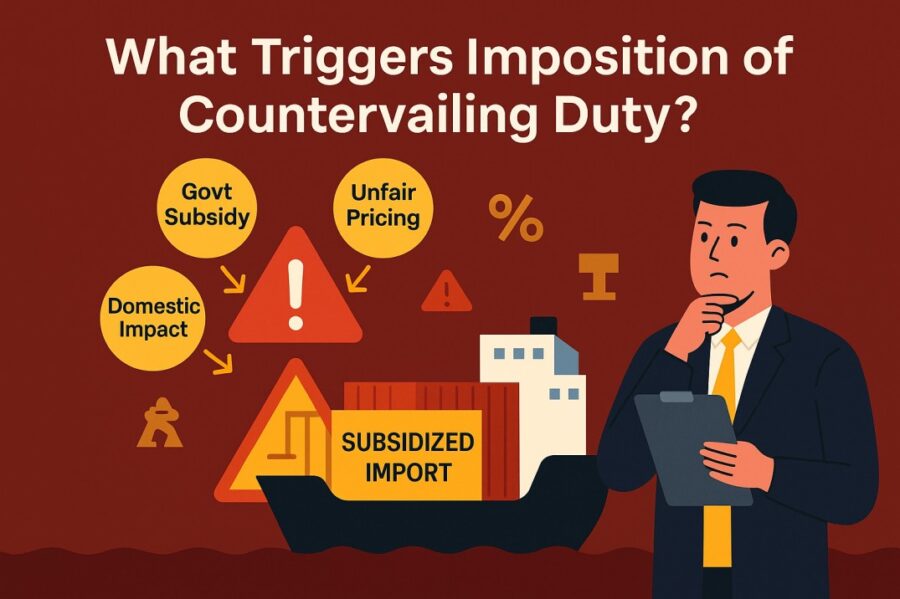
The main trigger for imposing CVD is the existence of subsidies which a foreign government provides to its domestic exporters. This allows the products of those exporters to have lower prices.
Countervailing Duty Investigation Process
Generally, this process of imposing CVD involves these steps:
Step 1: Filing of Petition
The domestic industry/industries that is/are facing issues and losses due to the subsidised imports need to file a complaint with a related investigating authority. In India, that authority is the Directorate General of Trade Remedies (DGTR).
This petition requires the following evidence:
- Proof that the domestic producers of the foreign country are receiving subsidies.
- Proof of material injury to domestic industry, such as financial losses and loss of market share.
- Establish a causal link between injury and subsidised imports.
Step 2: Initiation of Investigation
Upon receiving enough evidence, the investigation is initiated. The investigation process that follows is as such:
- Examination of the amount and type of subsidies the foreign government provides.
- Comparison of the normal value and export price of the product.
- Material injury to the domestic industry.
Step 3: Provisional Duty
In case that investigation reveals immediate harm to the domestic market conditions, provisional countervailing duties are imposed. These temporary duties can last for generally 6 months while the investigation is going on.
Step 4: Detailed Investigation
Then the investigating body will carry out these processes:
- Collection of evidence from domestic industries, importers, and exporters.
- Analysis of subsidies given to foreign producers.
- Analyse the specificness of the subsidy, which is its limitation to only certain industries.
- Analyse the impact of these imports on domestic industries.
- Try to form a causal link between the injury and subsidies.
Step 5: Final Determination
A final determination is then made after the complete investigation, which goes like this:
- If the evidence points in support of the filed petition, then the authority will recommend imposing countervailing duties.
- The rate of duty will reflect the subsidy amount to counterbalance and neutralise its impact on the domestic market.
Step 6: Imposing Countervailing Duty
The final CVD on subsidised goods can be either a specific duty or an ad valorem duty. The imposition of CVD is generally for 5 years, after which the impact of subsidised goods is re-investigated. In future, CVD can either be extended or removed as per the market circumstances.
Conclusion
Authorities impose a countervailing duty to protect domestic industries from unfair pricing caused by foreign subsidies. By understanding what is CVD in GST, businesses can better prepare for the tax implications of importing goods. Moreover, staying informed about CVD ensures compliance with international trade laws and supports fair competition in the domestic market.
For Indian importers, awareness of CVD regulations helps avoid legal penalties, ensures accurate cost forecasting, and supports ethical trade practices. It also fosters transparency in cross-border transactions and strengthens the economy by creating a level playing field for local manufacturers, ultimately contributing to sustainable industrial growth and national development.
💡If you want to streamline your payment and make GST payments via credit, debit card or UPI, consider using the PICE App. Explore the PICE App today and take your business to new heights.
 By
By 





